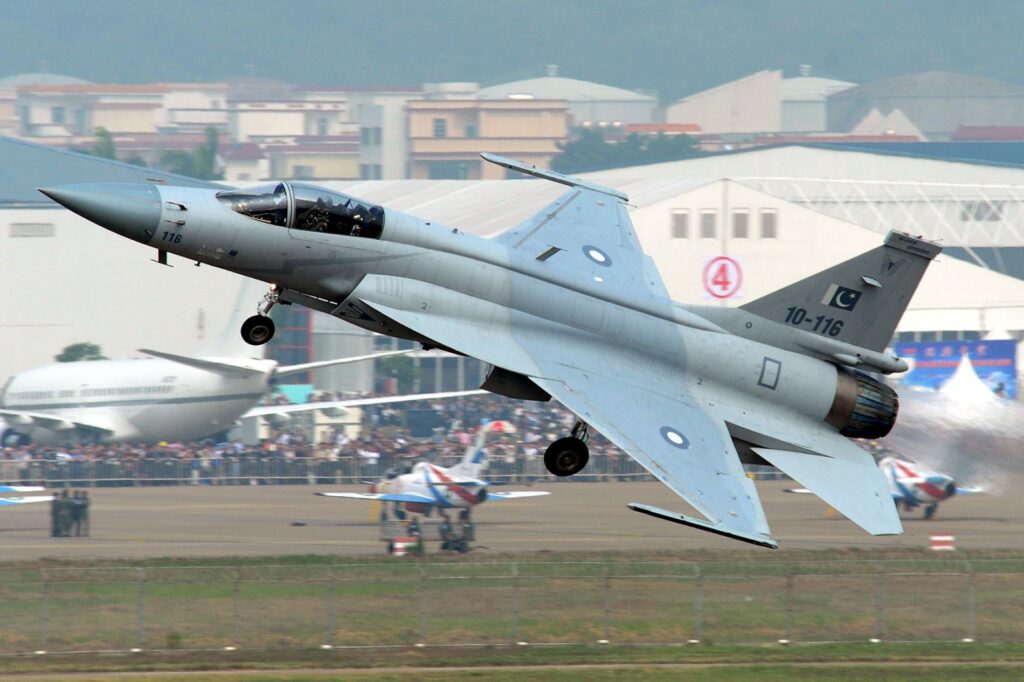Argentine president Alberto Fernandez has said the country is not going to purchase any military aircraft for the time being, pulling the plug on a fighter jet tender that pitted the Chinese-Pakistani JF-17 Thunder against India’s HAL Tejas and the US-made F-16.
“Argentina has to allocate its resources to more important things than the purchase of military aircraft. We are in a very unequal continent, but there are no war problems and unity among countries is sought,” Fernandez said in an a video interview to FT.
The excerpt with the quote has since been reposted by Fernandez’s Twitter account.
Argentina’s choices
In 2021, the Argentine government allocated $684 million for the purchase of supersonic combat aircraft in order to reinvigorate the country’s aging air force fleet.
Preliminary reports indicated that four options were being considered: the Lockheed Martin F-16 Fighting Falcon, the joint Chinese-Pakistani CAC/PAC JF-17 Thunder, the Indian-made HAL Tejas and the MiG-35, manufactured by Russia’s UAC.
Later reports indicated that the MiG-35 had been rejected and that the Argentine military was cross-evaluating the F-16, the JF-17 and the Tejas.
The JF-17 was often quoted as the strongest candidate for the purchase. In September 2021 a budget draft surfaced from the Executive branch of the Argentine government, mentioning the possible purchase of the JF-17. This spurred speculation that the Chinese-Pakistani offer had been successful.
In November 2022, Sabino Vaca Narvaja, the Argentine ambassador in Beijing, met with the representatives of China National Aero-Technology Import & Export Corporation (CATIC) and discussed the possible purchase of the JF-17, implying that it held pole position in the tender process.
It should be noted that during negotiations the aircraft was often referred to by its Chinese designation, AVIC FC-1 Xiaolong. In addition, Pakistani representatives were not present in the meeting, lending credibility to earlier reports that Argentina is seeking to collaborate with China directly and organize the assembly of the aircraft at home, taking Pakistan’s place in the co-production process.
A search for alternatives
Argentina has long struggled to modernize its air force, which suffered losses during the Falklands War with the United Kingdom in 1982.
After a domestic program to design a fourth-generation fighter jet failed, Argentina turned to foreign suppliers. However, many of its options were blocked due to the UK boycotting the sale of any aircraft component manufactured by a British company, as well as interference in talks with France and Israel.
The latest attempts to purchase South Korean-made KAI FA-50 light fighter suffered the same fate, with at least six of FA-50’s components – including the ejection seats – being made in the UK.
In the cases of the Tejas, HAL has said that it can manufacture the aircraft without British parts, while the FC-1/JF-17 is reportedly to have no such components. UK officials have since claimed that the sale of the F-16 would have met no British resistance.
Currently, the Argentine Air Force uses a number of domestically manufactured FMA IA-63 Pampa jet trainers, as well as a small fleet of heavily upgraded Lockheed Martin A-4AR Fightinghawk ground attack aircraft that are reportedly facing significant parts shortages.

